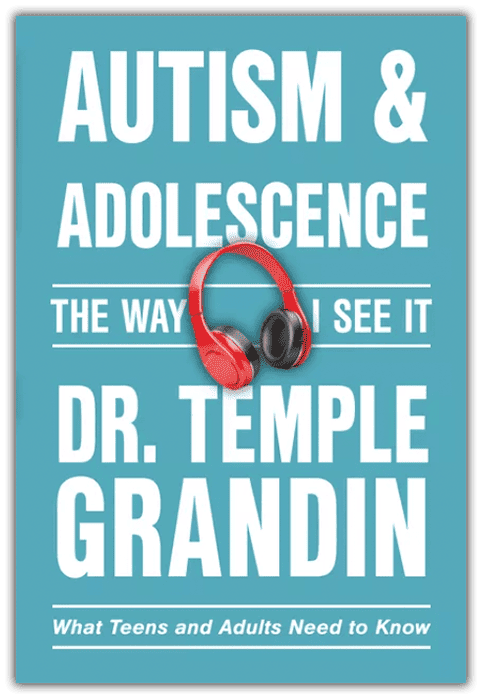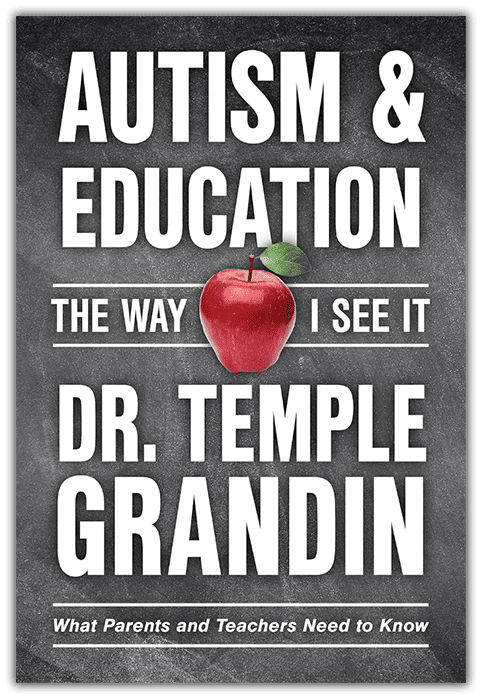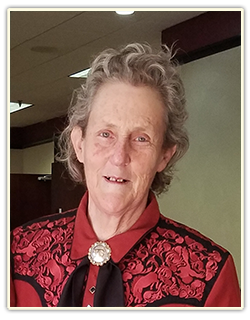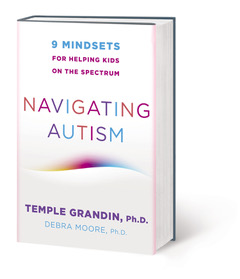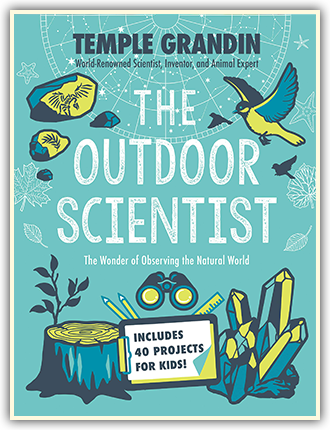
Webinars & Conferences
Upcoming Conferences
July 29 - Aurora, CO
August 14 - Hershey, PA
August 18 - Webinar
August 20 - New Orleans, LA
August 23 - Attica, MI
September 10 - Dallas Forth Worth
September 11 - Knoxville, TN
September 15 - Missoula, MT
September 19 - Cincinnati, OH
November 19 - Memphis, TN
November 20 - Jonesboro, AR
A MUST LISTEN!!
Temple's Latest Books!
Temple Grandin earns Dole Leadership Prize!
NAVIGATING AUTISM
"The Outdoor Scientist"
How to Use 1950’s Methods for Teaching Social
Skills to Children that Worked for Me
When I was in elementary school during the 1950’s all children were taught basic social skills the same way. When I visited a friend’s house and I made a table manners mistake, I was corrected by my friend’s mother. The methods and rules were the same at home, at the neighbors, and at school. All corrections were calm. There was no screaming or yelling.
1. Use Teachable Moments
When a mistake in social manners is made, never scream “NO, stop it, quit it or cut it out.” Instead give the instruction on a calm voice. Some examples are:
- Eating mashed potatoes with my hands – RESPONSE – Use your fork
- Wiping my mouth with my hand – RESPONSE – Use your napkin
- I forgot to s ay please or thank you – RESPONSE – You forgot to say
- Stuck my tongue out at a person – RESPONSE – Put tongue back in your mouth – that is rude behavior
2. Most important skills taught under age 8
- Learning how to take turns. This was taught with a board game. When I got a little older, the whole family played cards. Lessons learned from turn taking in board games can be applied to taking turns doing activities as a family. When the family went to a movie, I had to take turns with my sister picking the movie. Another example would be choosing a restaurant or a store to visit.
- Saying please and thank you
- Shaking hands and greeting people. It was demonstrated like teaching a person in a foreign country how to behave. Mother and teachers demonstrated the correct distance, looking in the eye and the amount of hand pressure. I practiced my skills by being party hostess when my mother invited guests for dinner.
- Shopping and learning the value of money. I got 50 cents a week to buy things I wanted such as comics, balsa wood toy airplanes, kites, and ice cream bars. These were items that if I wanted them I had to buy them myself. I also had to do all the interactions with the store staff. Mom stayed away when I made my purchases. My favorite toy airplane cost 69 cents so I had to have two weeks of allowance to buy it. Comics were 10 cents and a kite and string was 20 cents. Today these prices would be higher but I learned the value of money from my purchases. I also learned that I had to wait and save to get the 69 cent airplane.
- My ability in art was always encouraged. My teachers and mother encouraged me to draw many different things.
3. Excessive praise is bad
When I was very young, Applied Behavior Analysis (ABA) methods were used to teach me to talk and lots of praise was used. This was required to get my speech started. By age four I had learned to talk and ABA methods were phased out. After I learned to talk, constant praise was stopped. Praise was reserved for something really special such as a really fabulous art project or singing at a concert. The following activities and behaviors were not praised. In the 1950’s, children were expected to do the following. This may not work for a nonverbal child.
- Be on time for meals, religious workshop or school bus pickup
- Making my bed
- Dressing myself. Before I went to bed, I was taught to lay out the clothes I was going to wear the next day. I started to do this at age five.
- Getting up on time
- Being polite
Saying please when making a request and thanking another person for doing something I requested was always emphasized. In many situations, saying thank you was a form of praise. At the dining room table, my sister would ask me to pass the serving dish of green beans. When I passed it, she said thank you. To effectively teach children the parents also have to practice good manners and say please and thank you.
4. Temper Tantrums
When I had a temper tantrum at home or at school the penalty was no TV for one night. Mother and my elementary school teachers worked as a team. If I had a temper tantrum at home, she put me in my room and let me scream it out. Thirty minutes later when I was calm, she invited me back to join the family, but there was no TV tonight. Mother always handled it calmly.
5. Oppositional Behavior
Provide choices to help prevent oppositional behavior where a child always says No. Below are some examples:
- You can do your homework either after school or after dinner
- You can wear your blue shirt or your white one. I was allowed to pick out the clothes I wanted to wear from the clothes that were in the drawer.
- Video game playing needs to be limited to one hour a day and two hours a day on weekends. Give the child a choice of activities they can do when they are not playing video games. They could choose between playing outside with kites and airplanes or adding to their rock collections. Both my sister and I had extensive rock collections that we kept in the garage. I spent hours doing airplane and kite design experiments. We also did creative craft projects such as making abstract art by gluing painted pieces of pasta to cardboard. Another time, my sister and I decorated our trikes with gold paint.
About Temple Grandin
Dr. Grandin did not talk until she was three and a half years old. She was fortunate to get early speech therapy. Her teachers also taught her how to wait and take turns when playing board games. She was mainstreamed into a normal kindergarten at age five. Oliver Sacks wrote in the forward of Thinking in Pictures that her first book Emergence: Labeled Autistic was “unprecedented because there had never before been an inside narrative of autism.” Dr. Sacks profiled Dr. Grandin in his best selling book Anthropologist on Mars.
Dr. Grandin became a prominent author and speaker on both autism and animal behavior. Today she is a professor of Animal Science at Colorado State University. She also has a successful career consulting on both livestock handling equipment design and animal welfare. She has been featured on NPR (National Public Radio) and a BBC Special – "The Woman Who Thinks Like a Cow". She has also appeared on National TV shows such as Larry King Live, 20/20, Sixty Minutes, Fox and Friends, and she has a 2010 TED talk. Articles about Dr. Grandin have appeared in Time Magazine, New York Times, Discover Magazine, Forbes and USA Today. HBO made an Emmy Award winning movie about her life and she was inducted into the American Academy of Arts and Sciences in 2016.
When she was young, she was considered weird and teased and bullied in high school. The only place she had friends was activities where there was a shared interest such as horses, electronics, or model rockets. Mr. Carlock, her science teacher, was an important mentor who encouraged her interest in science. When she had a new goal of becoming a scientist, she had a reason for studying. Today half the cattle in the United States are handled in facilities she has designed.
